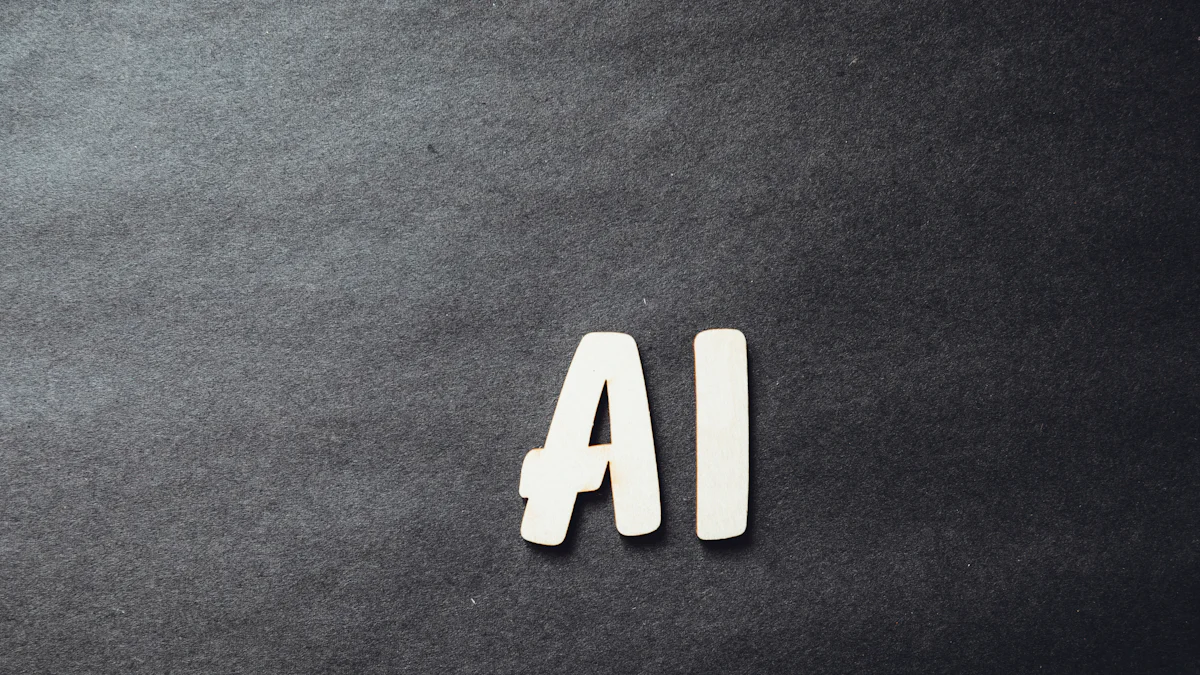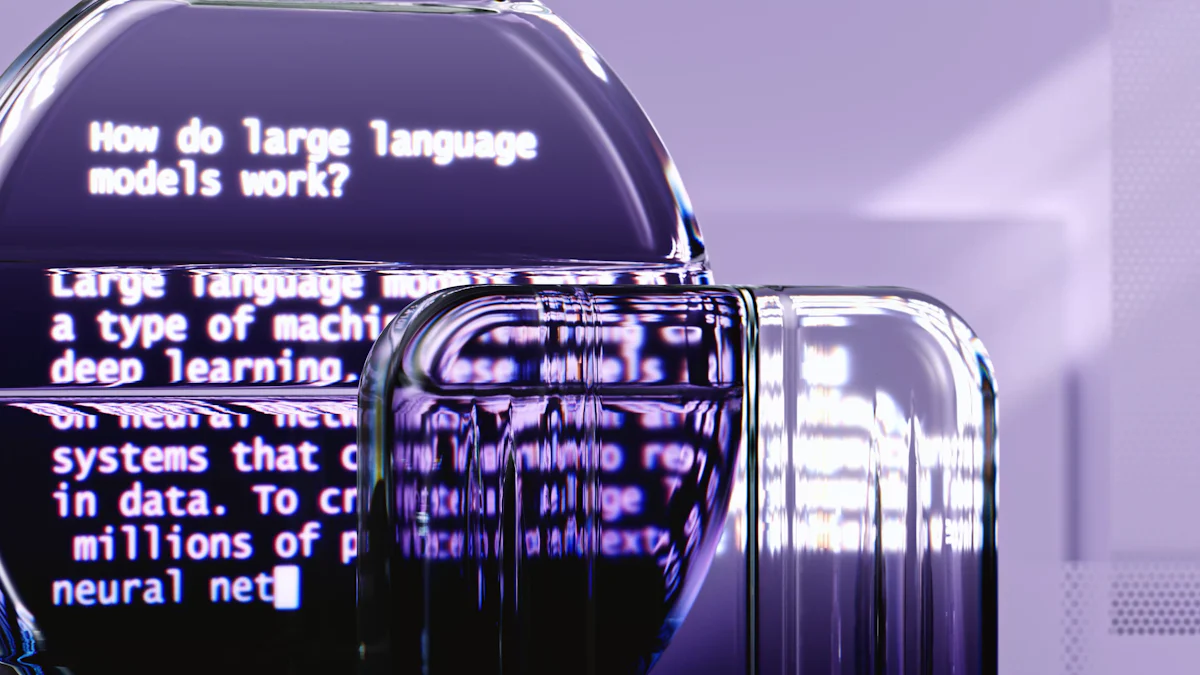How AI detectors work

AI detectors identify whether content originates from human authors or artificial intelligence. The development of AI detection technology has evolved significantly over recent years. Early methods relied on basic pattern recognition, but modern detectors use advanced machine learning algorithms. The importance of AI detectors in today's digital landscape cannot be overstated. With the rise of AI-generated content, maintaining authenticity and credibility has become crucial. AI detectors help ensure the integrity of information across various industries, including marketing, journalism, and education.
Understanding AI Detectors
What are AI Detectors?
Basic definition and purpose
AI detectors identify whether content originates from human authors or artificial intelligence. These tools analyze text to find patterns consistent with AI-generated or human-written content. The primary purpose involves maintaining the authenticity and credibility of information in various fields.
Types of AI detectors
AI detectors come in several types, each designed for specific tasks:
Text-based detectors: Analyze written content to determine its origin.
Image-based detectors: Examine visual content for signs of AI generation.
Behavioral detectors: Monitor user behavior to identify automated actions.
Importance of AI Detectors
Role in cybersecurity
AI detectors play a crucial role in cybersecurity. These tools help identify and mitigate threats posed by AI-generated phishing emails and malicious content. By analyzing patterns and inconsistencies, AI detectors enhance the security of digital platforms.
Impact on content authenticity
Maintaining content authenticity is essential in today's digital landscape. AI detectors ensure that information remains credible and trustworthy. These tools help prevent the spread of misinformation by identifying AI-generated content. Evaluating the effectiveness of AI detectors is crucial. This evaluation helps uncover potential biases or limitations in their performance.
Soheil Feizi, an AI expert, points out that "Current detectors of AI aren’t reliable in practical scenarios." This highlights the need for continuous improvement in AI detection technology.
AI detectors work well with longer texts but can fail if the AI output is edited or paraphrased. This emphasizes the importance of ongoing evaluations and refinements in AI detection algorithms.
How AI Detectors Function

Core Principles
Machine learning algorithms
Machine learning algorithms form the backbone of AI detectors. These algorithms analyze vast amounts of data to identify patterns and anomalies. AI detectors use supervised learning, where the system learns from labeled data containing both human and AI-generated text. This process enables the detector to differentiate between the two types of content. Unsupervised learning also plays a role by allowing the system to identify new patterns without prior labeling. The combination of these techniques enhances the accuracy and reliability of AI detectors.
Data analysis techniques
Data analysis techniques are crucial for the functioning of AI detectors. These techniques involve examining various features of the text, such as word frequency, sentence structure, and grammar. AI detectors employ statistical methods to compare these features against known patterns of human and AI-generated text. By analyzing the nuances in writing, AI detectors can determine the likelihood of content being AI-generated. This process ensures that the analysis remains comprehensive and precise.
Key Technologies
Natural language processing (NLP)
Natural language processing (NLP) is a key technology used in AI detectors. NLP allows machines to understand and interpret human language. AI detectors use NLP to analyze the linguistic and contextual features of the text. This analysis includes examining syntax, semantics, and sentiment. NLP helps AI detectors identify subtle differences between human and AI-generated content. The integration of NLP enhances the overall effectiveness of AI detection systems.
Neural networks
Neural networks play a significant role in the functionality of AI detectors. These networks mimic the human brain's structure and function, allowing for advanced pattern recognition. AI detectors use neural networks to process complex data and identify intricate patterns. Deep learning, a subset of neural networks, further improves the accuracy of AI detectors. By continuously learning from new data, neural networks enable AI detectors to adapt to evolving AI techniques. This adaptability ensures that AI detectors remain effective in identifying AI-generated content.
Technical Aspects of AI Detection
Methods Used in AI Detection
Supervised learning
Supervised learning plays a crucial role in AI detection. This method involves training AI detectors with labeled data sets. These data sets contain examples of both human-written and AI-generated content. The system learns to identify patterns and features unique to each type. This process enhances the accuracy of AI detectors. By continuously updating the training data, AI detectors can adapt to new writing styles and techniques.
Unsupervised learning
Unsupervised learning offers another approach for AI detection. Unlike supervised learning, this method does not rely on labeled data. Instead, AI detectors analyze large volumes of text to identify patterns and anomalies. This technique allows AI detectors to discover new trends and behaviors in AI-generated content. Unsupervised learning helps improve the adaptability of AI detectors. This method ensures that AI detectors remain effective even as AI technology evolves.
Challenges in AI Detection
False positives and negatives
False positives and negatives present significant challenges for AI detectors. A false positive occurs when an AI detector incorrectly identifies human-written content as AI-generated. Conversely, a false negative happens when AI-generated content is mistaken for human-written. These errors can undermine the credibility of AI detectors. Continuous evaluation and refinement of AI detection algorithms are necessary to minimize these inaccuracies.
Soheil Feizi, an AI expert, emphasizes that "Current detectors of AI aren’t reliable in practical scenarios." This statement underscores the importance of addressing false positives and negatives.
Evolving AI techniques
The rapid evolution of AI techniques poses another challenge for AI detectors. AI-generated content becomes increasingly sophisticated over time. New algorithms and models can produce text that closely mimics human writing. AI detectors must constantly adapt to these advancements. Regular updates and improvements to detection algorithms are essential. This ongoing process ensures that AI detectors can effectively identify the latest AI-generated content.
Practical Applications of AI Detectors

Use Cases in Various Industries
Media and journalism
AI detectors play a significant role in media and journalism. Journalists use these tools to verify the authenticity of news articles and reports. AI detectors help identify AI-generated content, ensuring that published information remains credible. Media organizations rely on AI detectors to maintain the integrity of their content. This practice helps prevent the spread of misinformation and fake news.
Finance and banking
The finance and banking sectors benefit greatly from AI detectors. Financial institutions use these tools to detect fraudulent activities and ensure the authenticity of financial documents. AI detectors analyze transaction patterns to identify suspicious behavior. Banks employ AI detectors to safeguard customer data and prevent identity theft. The use of AI detectors enhances the security and reliability of financial services.
Future Implications
Advancements in AI detection technology
Future advancements in AI detection technology promise to improve accuracy and reliability. Researchers continue to develop sophisticated algorithms to enhance AI detectors. These advancements will enable AI detectors to better differentiate between human-written and AI-generated content. Improved training data quality will also contribute to higher accuracy rates. Continuous innovation in AI detection technology will address current limitations and challenges.
Ethical considerations
Ethical considerations play a crucial role in the development and deployment of AI detectors. Ensuring fairness and transparency in AI detection algorithms is essential. Developers must address potential biases in training data to avoid discrimination. Ethical guidelines will help maintain the integrity and trustworthiness of AI detectors. The responsible use of AI detectors will ensure that these tools serve the best interests of society.
AI detectors have become essential tools in maintaining the authenticity and credibility of digital content. These detectors use advanced machine learning algorithms and natural language processing to identify AI-generated content. Various industries, such as marketing, journalism, and finance, rely on these tools to ensure information integrity.
The future of AI detectors looks promising. Advancements in technology will enhance their accuracy and reliability. Integration with other systems, like security cameras, will expand their applications. Continuous innovation will address current limitations and challenges.
AI detection remains crucial in safeguarding the digital landscape. Ensuring the responsible use of these tools will benefit society by maintaining trust and transparency in information.
See Also
Unlocking SEO Triumph with Enigma AI: An In-Depth Manual
Writesonic AI versus QuickCreator: Content Creators Face Off
Artificial Intelligence Blog Creator: Web Hosting, Content, and Optimization
Which SEO Forecasts or Forecasters Are on Your Radar for 2024?

